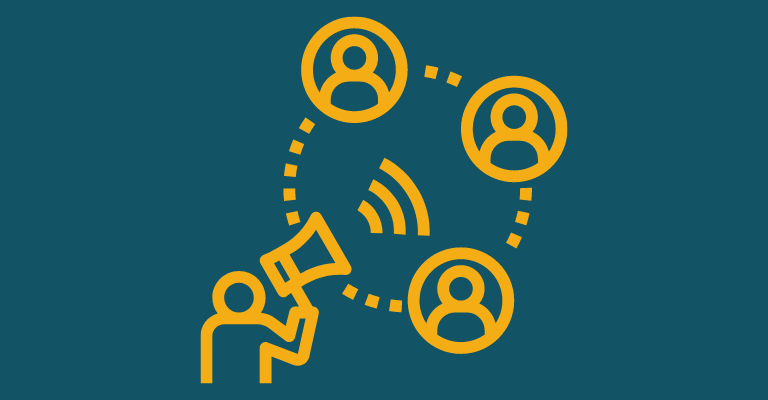Our brains are wired to constantly try to predict what’s coming next.
When we can’t predict what’s next, our brains use considerably more resources to process everything around us.
This can lead to increased stress and anxiety, as our brains struggle to make sense of the situation.
When we have a clear understanding of what to expect in the workplace, our brains can more easily predict what’s next. This can help conserve mental energy and improve our ability to focus on important tasks.
Clear and consistent communication in the workplace can help our brains make these predictions by providing us with the information we need to anticipate what’s coming next.
It can also help reduce this stress by providing employees with a sense of predictability and control over their work environment.
This can ultimately improve employee resilience, as they are better equipped to handle unexpected challenges and adapt to changing circumstances.
By providing employees with regular updates on important issues and creating a sense of transparency, employers can help foster a culture of trust and collaboration.
This can help employees feel more connected to their colleagues and the organization as a whole, which can provide a sense of support and encouragement during difficult times.

Free Download
Download our free guide, “6 Tips to Boost Workplace Resilience” to help your employees become their most resilient selves today!
Tips for Clear and Consistent Communications
Clear and consistent communication is essential for a successful workplace, but achieving it can be easier said than done.
Here are some tips for promoting clear and consistent communication in your organization:
Use Multiple Channels
Not everyone absorbs information in the same way, so it’s important to use multiple channels to communicate important information.
This might include email, team meetings, video conferences, and even social media.
By using multiple channels, you can ensure that all employees have access to the information they need, regardless of their preferred method of communication.
Be Transparent
Transparency is key to building trust and fostering a positive workplace culture.
Make sure that employees understand the reasoning behind important decisions and are kept informed about any changes that might impact their work.
Even when you don’t have all the answers, let them know that.
If possible, offer a timeline of when you expect to know more and if you still don’t know more then, communicate it.
When employees don’t have information, they will be left to fill in the gaps (and it’s not usually positive).
Encourage employees to share their own ideas and perspectives, and be open to feedback from others.
Use Plain Language
Jargon and technical terms can be confusing and alienating for employees who are not familiar with them.
To promote clear and consistent communication, use plain language that is easy to understand.
This will help ensure that all employees are on the same page and can communicate effectively with one another.
Be Proactive
Don’t wait until a problem arises to communicate with employees.
Instead, be proactive in your communication efforts by providing regular updates on important issues and fostering an environment of transparency and collaboration.
This can help prevent misunderstandings and reduce the risk of conflicts or miscommunications down the line.
The Role of Leaders in Clear and Consistent Communications
Leaders play a critical role in promoting clear and consistent communication in the workplace.
As the individuals responsible for guiding their teams, leaders must prioritize open and transparent communication to foster a positive and productive work environment.
One of the key ways that leaders can do this is by setting expectations for communication among team members.
Leaders should encourage their employees to communicate openly and honestly with one another. They should also establish regular channels for sharing updates, feedback, and concerns.
By doing so, leaders can help create a culture of trust and transparency. This can ultimately improve employee resilience and reduce the risk of miscommunications or conflicts.
Leaders also have a responsibility to model clear and consistent communication themselves.
This means communicating regularly with their team members, being transparent about important issues, and providing constructive feedback to employees on their work.
By modeling these behaviors, leaders can set the tone for the rest of the organization and create an environment where clear and consistent communication is valued and prioritized.
Finally, leaders should recognize the importance of communication in promoting employee resilience.
When employees feel informed, supported, and valued, they are better equipped to handle unexpected challenges and adapt to changing circumstances.
By prioritizing clear and consistent communication, leaders can help improve employee morale, reduce stress and anxiety, and ultimately foster a more resilient and productive workforce.
The Benefits of Clear and Consistent Communications for Resilience in the Workplace
Clear and consistent communication in the workplace can have a number of benefits, including improved employee resilience.
When employees feel informed and supported, they are better equipped to handle unexpected challenges and adapt to changing circumstances.
Here are some specific ways that clear and consistent communication can promote resilience in the workplace:
Reducing Uncertainty
When employees are uncertain about their roles, job expectations, or the direction of the organization, it can lead to stress and anxiety.
Clear and consistent communication can help reduce uncertainty by providing employees with the information they need to understand their role in the organization and feel confident in their ability to do their job.
Building Trust
Trust is a critical component of resilience. Clear and consistent communication can help build trust among employees and between employees and their leaders.
When employees feel that their leaders are open and transparent with them, they are more likely to trust in the decisions that are being made and feel confident in their ability to weather any challenges that come their way.
Encouraging Collaboration
Clear and consistent communication can also encourage collaboration and teamwork among employees.
When employees feel that they are part of a cohesive team that is working towards a common goal, they are more likely to support one another and work together to overcome any obstacles that arise.
Improving Job Satisfaction
When employees feel valued and engaged in their work, they are more likely to feel motivated and committed to the organization, even in the face of adversity.

Free Download
Download our free guide, “6 Tips to Boost Workplace Resilience” to help your employees become their most resilient selves today!
Conclusion
Clear and consistent communication is essential for workplace resilience.
When employees are uncertain about their roles or the direction of the organization, it can lead to stress and anxiety.
Clear and consistent communication can help reduce uncertainty, build trust, encourage collaboration, and ultimately improve employee resilience.
By prioritizing clear and consistent communication, employers can foster a more resilient and productive workforce.



